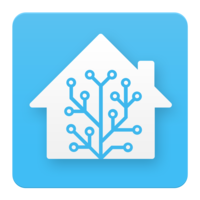 It's 2025 and the need for privacy is more important the ever. Over the next
few weeks, I plan to document the things I've done to add privacy to my life.
It's 2025 and the need for privacy is more important the ever. Over the next
few weeks, I plan to document the things I've done to add privacy to my life.
I've made changes to my mobile phone, smart speakers around the house, services I use, and more.
This is my first Privacy post, but I plan to expand on my journey as I go.

For years, I hosted my email on Google. I was grandfathered into free Google Workspace allowing me to host my domain there. However, concerns over Google's respect of prvacy and their hesitance to "Don't be evil" made me want to make a change.
I did a lot of research and tested different services like TutaMail and others. TutaMail was great and I really wish I could have used them, but it was missing some features that I use a lot. For instance, I have some aliases set up on my domain that deliver to by me and my wife. TutaMail does not support that.
So I ended up with Fastmail. The price is good ($14/mo for a 6 person family). Even cheaper paid per year instead of per month. Remember: If the product is free, you are the product.
Photos
I also used to host my Photos in Google Photos. But, again, I had concerns. So I set up a Raspberry Pi in my house and installed Immich on it (in Docker). Now my photos are hosted under my control. Immich is very similar to Google Photos too: many of the same features.
Google Drive -> Nextcloud
I've removed all of my data in Google Drive and set up a Nextcloud in my house. This service is NOT hosted on the same Raspberry Pi. It is hosted on a much more powerful system inside my private network. It is only accessible inside my house or via VPN. But it allows me to easily sync documents between computers and my phone. I can share documents with my wife. I've installed the Notes app so that I can sync Notes between my desktop (browser) and my phone (Nextcloud Notes).
Nextcloud works well with LibreOffice on the desktop and Collabora Online for integration in Nextcloud's web interface.

Meetings
I used to use Google Meet for meetings with my friends and family, but ... well I think you see the pattern here.
I looked at Jitsi Meet and started hosting it on the same Raspberry Pi. This allows me to have meetings that I truly know are private.
Git/Source Code
I used to host my source code and configs in Github like almost everyone else in the world.
I installed Forgejo on the same Raspberry Pi so that I can host my projects on a server I control.
Reddit -> Lemmy
Reddit went to hell a couple years ago and I abandoned it then. I only ever go to Reddit now when a web search sends me there.
The Fediverse is a federated communitity of applications. One is Lemmy, which feels a lot like Reddit did in the early days. While Reddit is easier to use (one server, one client, etc), the Fediverse, and Lemmy, are a bit more complicated. Lemmy is a federated group of servers. So you need to find a Lemmy instance to join. I chose lemmings.world.
As for clients, I use the main webpage on my desktop and Voyager on my phone.
Instagram -> Pixelfed
Instagram (Thank, Meta) sucks now that Meta no longer does fact checking (among another mountain of other issues I'm not getting into here).
Pixelfed is another Fediverse app that has different servers to join and clients to choose from.
Twitter -> Mastodon
I'll admit something here... I never really go Twitter. I tried it a few times but after a couple days, I'd forget about it. But I decided to switch to the Fediverse's Mastodon where you can choose servers to join.
I never really settled on a client so I just browse via web browser, even on my phone, when I remember to
Chat
For chat, there are many services that I've used: SMS, Google Chat, and others that I won't list (long retired like AIM and ones I never liked). But these are insecure and not private. So Signal is where to be. I've been using Signal for many years, but recently have made a push to have those close to me use it exclusively.
I still chat with those stragglers on SMS, but hope they'll see the light soon.
Web Browsers
To get away from Chrome, Safari, and stock-Firefox, I've been using LibreWolf for many years. It is very much like Firefox with some telemetry removed and hardening done to make it more secure.
Bookmarks

While I never used (or haven't in MANY years) any of the online bookmark sites, I was running something at home that I liked, but it wasn't polished and lacked some features. Then I found LinkWarden. I host this service inside my house and it requires a VPN to access, but it allows me to have access to all of my bookmarks no matter where I am. And there is an app for my phone (LinkDroid) and a Firefox extension for my browser at home
Mobile Phone
Now for the part that you're probably all waiting for... My phone.
I own a Pixel 9 Pro. The hardware is great and the Pixel experience is almost perfect, but... Google.
Enter GrapheneOS. It's a privacy and security focused OS for Pixel phones.
Probably the hardest part of this was my phone. I had to find open-source options to things that I run on my phone:
- Lawnchair Launcher instead of the stock Pixel launcher
- FlorisBoard Keyboard instead of GBoard. This one still needs some work. Completions aren't working right now, but most everything else is
- IronFox Browser for my web browser instead of Chrome or Firefox. IronFox was originally a fork of Mull, which is based on Mozilla Firefox. It's privacy and security focused.
- Voyager for Lemmy
- Pixelix for Pixelfed
- Signal for private chats
- Symfonium for music
- Moon+ Reader Pro for books
Home Assistant Assistants

As I've previously posted, I use Home Assistant to manage my smart home. Previously, I had it integrated with Google and had several Google speakers around my house that I could interact with Home Assistant using my voice. I could say, "Hey, Google... turn on the Dresser Lamp" and it would do the right thing. But, with my privacy concerns regarding Google, I've ripped all of those speakers out (and removed the Google integration).
The wonderful Home Assistant team came up with a great solution: Home Assistant Voice. It's a Voice assistant that we can use to interact with Home Assistant. I've configured mine to respond to, "Hey, Jarvis". So I can say, "Hey Jarvis... turn on the God Damn TV" and it will. (For background on the naming of my TV, see my previous post).
Summary
If you've made it this far, you can see I made a lot of changes to my workflow. I know there are more changes I need to make in the future.
I plan to write up more details about the individual elements when I get a chance.
If you have any questions or suggestions, please feel free to email me.







